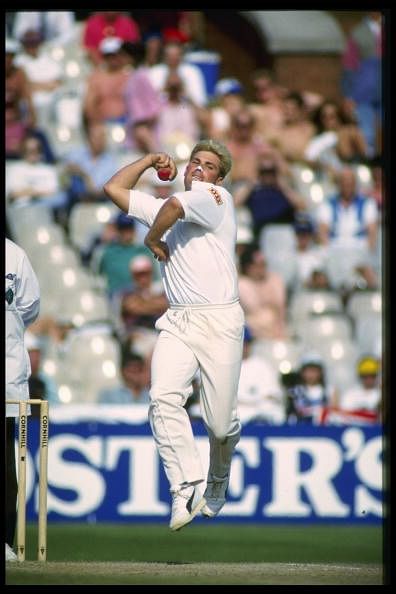
The disappearing art of leg spin bowling in cricket

Jun 1993: Shane Warne about to bowl for Australia against England in his 1st Ashes Test at Old Trafford, Manchester Mandatory Credit: Ben Radford/Allsport UK
It was the year 1992; a young blonde leg spinner had been given the baggy green as a new year gift. The present would have felt more like a punishment as he had to face off against a formidable Indian line-up known for tackling spin with ease.
The young rookie managed to claim a solitary wicket and was hammered around the park for 150 runs. Little did the world know who this leg spinner would turn out to be!
Fast forward to June ’93 and the first ball of the Ashes made everyone realize the magician they were watching. Such was the talent and skill of one of the game’s greatest leg spinners – Shane Warne.
22 years after that debut in Sydney, an English leg spinner was handed a debut at the same venue. Trying to flight the ball, the youngster was taken to the cleaners by the Australian juggernaut.
Scott Borthwick will have a long way to go before he comes near to anything Warne has achieved in his career. But it was encouraging to at least see a leg spinner trying to use the natural variations of flight to fox a batsman. Unfortunately, the game has seen a steady decline in leg spinners over the past decade.
With the advent of T20 cricket, the role of spinners has been reduced to a containing one. A spinner is rarely used as an attacking option in the shortest format of the game. Another product of the T20 generation is the advent of mystery spinners. With balls ranging from the doosra, teesra or the carrom ball, spinners are not using conventional spinning methods to fool the batsman.
A classic example of this phenomenon was Ajantha Mendis. Albeit not a leggie, Mendis’s spin flummoxed the great Indian batting line-up in 2008. However, when the secret of reading the ball was discovered, Mendis was reduced to a toothless tiger.
It is an undoubted fact that leg spinners have become a rare breed in today’s generation. The very fact that an English leggie has made his debut 13 years after the previous one highlights this issue. A reason for this could be that the art of leg spinning is not easy to master. A definite control is required or else the ball would either be too short or a full toss gift for the batsman. Something which the great Shane Warne did effectively was to mix up the leg spinners, flippers and googlies and keep bowling at the same spot.
This resulted in the batsman always playing a guessing game to figure out the delivery. A leg spinner provides balance to a side and can be used both as an attacking and defensive option by the captain. The very fact that two of the highest wicket takers in tests are leg spinners enlists the potency of leg spin bowling.
In today’s generation, none of the major teams can boast of a good effective leg spinner. If it is asked to pin point the best leggie playing: the names that would come to mind would include possibly Imran Tahir, Amit Mishra or even Shahid Afridi. Imran Tahir has been a spinner who has shown glimpses of brilliance but faded under pressure.
On the other hand, Amit Mishra despite taking a record number of wickets in a bilateral series in Zimbabwe is struggling to find a spot in the playing XI. India desperately missed a spinner of the caliber of Anil Kumble in Johannesburg to close out the game. Shahid Afridi has been effective in keeping the run rate in check and has also produced some riveting spells of leg spin bowling. But none of these bowlers can be considered in the same league as the great spinners of the past.
The potent flipper, the stock ball, the unpredictable googly and the mile-spinning leg spinner all seem like a lost art in today’s slam-bang cricket. Let us just hope that this art is not completely engulfed by the perils of T20 cricket and we have many more “Kumbles” and “Warnes” to come in the future.